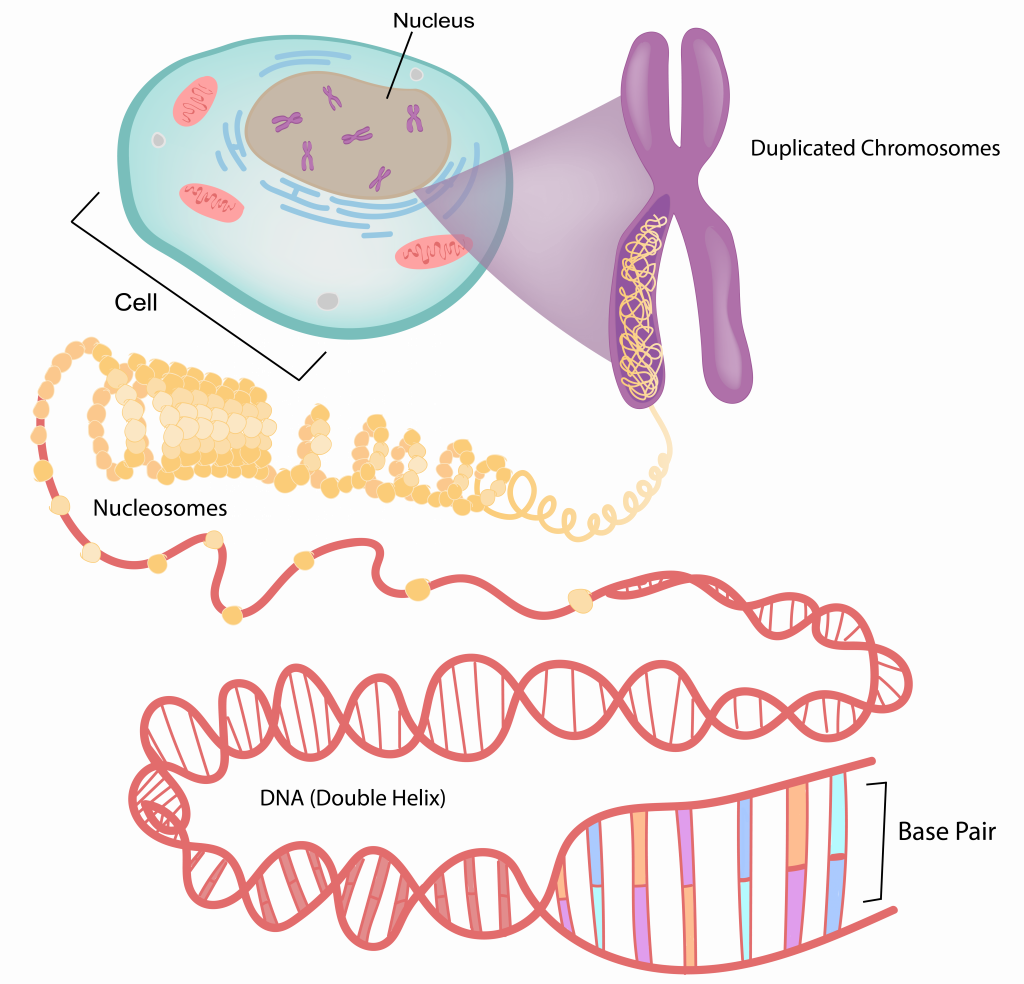5.2 The Genetic Basis of Gene Expression
A gene is the basic unit of inheritance. Genes consist of the nucleic acid DNA, large molecules packaged in dense cellular structures called chromosomes. Simply, DNA (deoxyribonucleic acid) consists of nucleotides that are themselves relatively simple: each nucleotide includes a sugar (deoxyribose), a phosphate ion, and a nitrogen-rich (or nitrogenous) “base”—the double-ringed purines guanine and adenine, and the single-ringed pyrimidines cytosine or thymine. Nucleotides are joined in a linear sequence that represents one of DNA’s strands. Genetic information is stored in the actual sequence of these nucleotides, and these sequences involve quite a lot of information. For example, the human genome, or full set of DNA, contains about 3 billion nucleotide bases, forming about 25,000 genes.
Check Yourself
DNA structure is fairly simple
One molecule of DNA involves two strands, joined at the bases, anchored by a “backbone” of repeating sugar-phosphate units, and wound in a helical conformation. Thus, DNA is often referred to as a “double helix.” Bases join together according to complementarity. Specifically, adenine (A) bonds with thymine (T), and cytosine (C) bonds with guanine (G). They combine through chemical interactions called hydrogen bonds, relatively weak associations that can be broken with heat or one of several enzymes.
In humans, two meters (~nine feet) of DNA are packed into each one of trillions of individual cells. Chromosomes are how cells have solved the problem of packing so much information (long strands of DNA) into a small, tightly compacted structure. DNA-binding proteins help to package these long strands of DNA into the chromosomes.

DNA consists of paired bases of single-ringed (pyrimidine) and double-ringed (purine) nitrogenous, or nitrogen-rich, bases. The bases are visualized as letters at right. Their structures are represented below.


